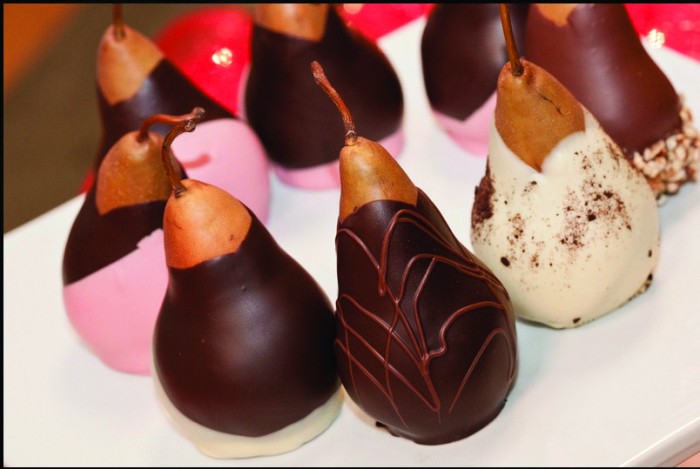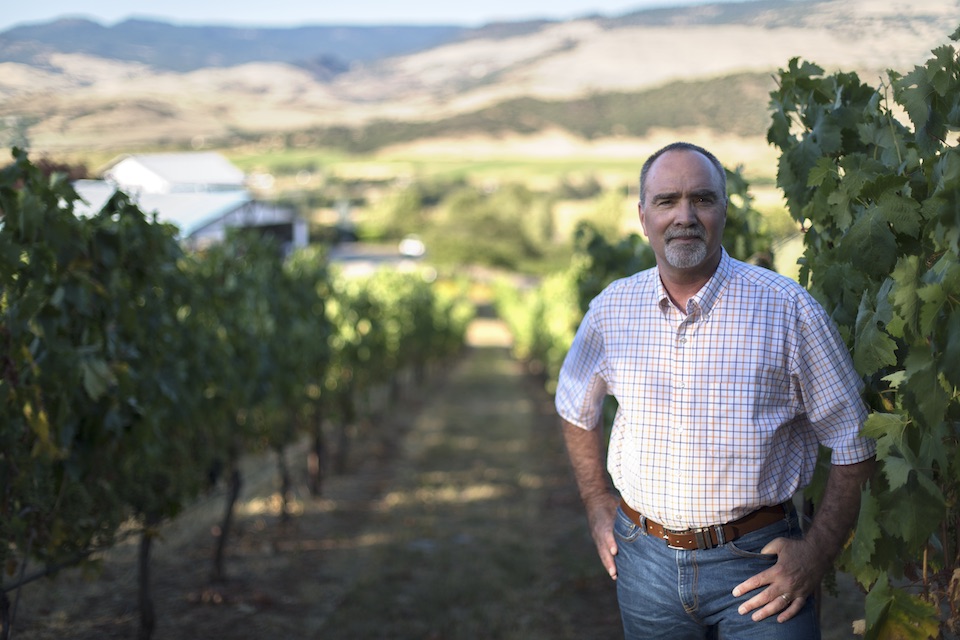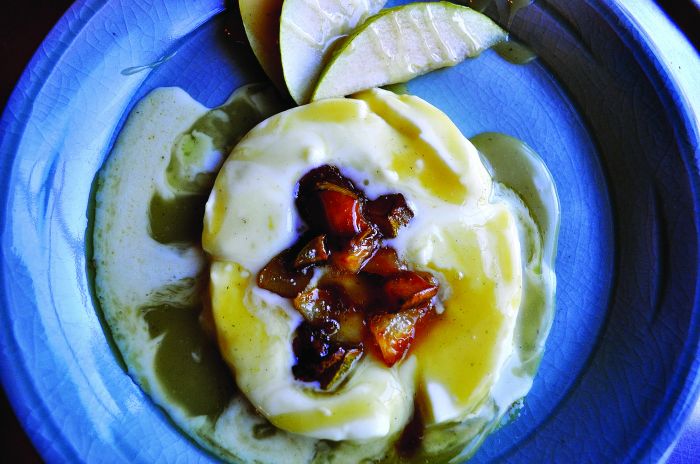Charlie Douglass faces supreme temptation daily. Nearly every morning he has a rendezvous with an enrober, a machine that releases a sensual wave of shining liquid chocolate over row after row of truffle centers.
As chocolatier and manager of research and development for the bakery and candy kitchen at Harry & David in Medford, Douglass’ job is to translate new product suggestions into chocolate, flour and sugar. “Our goal is to make things people will want to eat more than once,” he says.
Douglass is a third-generation chocolatier. His great-uncle started Douglass Candies in Wildwood, New Jersey in the 1920s. Douglass’s father eventually took over the business and had his son doing tasks around the shop by the time he was 9 years old.
When he got older, Douglass apprenticed with a Swiss candymaker named Christian Steiner, who taught him how to work with sugar. He continued working at his family’s business, where he got hands-on instruction in the basics of working with chocolate. Over time, he’s taken classes at The French Pastry School in Chicago and other venues to better understand the art and science of working with chocolate.
About half of Douglass’ work is carried out in a small test kitchen at Harry & David. Once he’s perfected his prototype, he has to adapt that single truffle or tray of cookies to mesh with the company’s production facility.
Douglass estimates that he creates seventy-five new products annually. In his thirty-one years with Harry & David, the chocolatier has created many of the dozens of flavors of Moose Munch, a popular caramel corn, dozens of truffles and one of its newest treats, Oregon-grown Bosc pears hand-dipped in chocolate.
“There’s really no end to what can be done with candy,” says Douglass. “I enjoy opening myself up to the process of discovery. It’s great to create things for a living.”
That same creative spirit set Jeff Shepherd on a sweet path nearly a decade ago. The owner of Lillie Belle Farms, a chocolaterie in nearby Central Point, found his calling by combining his two passions—food and art. Shepherd spent twenty-five years working in restaurants and his own bed and breakfast before moving to Southern Oregon in 2001. He bought a farm and planted an acre of strawberries, marionberries and raspberries.
The plants marvelously produced, and suddenly Shepherd had more berries than he knew what to do with. He started making truffles with fruit centers and selling them from the trunk of his car at the local farmers market. People couldn’t get enough of them, so he set up a website and started wholesaling. In 2007, he opened his own store next to Rogue Valley Creamery, creating a little foodie oasis in this otherwise industrial town.
Lillie Belle Farms is painted the same shades of purple as its confectionery boxes. Inside, visitors can shop and watch employees fill truffles and pour bacon chocolate bars by hand. Some days, they may catch a glimpse of Shepherd himself, sitting on a stool and sculpting with colored cocoa butter. Designs range from tiny Voodoo Bunnies to a life-sized chocolate guitar and amplifier he made last year for the Food Network’s television show, “Outrageous Food.”
Shepherd has no professional training in making candy and tends to be a tad self-deprecating about his “hippie chocolates” (He makes a product called Hippie Crunch, which is “a super crunchy munchy of caramelized rice and dark chocolate”). Despite his modesty, Shepherd has earned several honors. Perhaps the most flattering of these awards came in 2009 when Dessert Professional magazine named him one of the top ten chocolatiers in the country.
“I’ve found my calling,” Shepherd says. “I’ve found the perfect medium that lets me do what I want. And it’s way better than working in a restaurant. No one ever sends back a plate because they don’t like the food.”
Chocolate starts its life as a purple oblong pod full of beans slightly larger than almonds. Once the pods ripen, the seeds are extracted and fermented for up to six weeks. The seeds are then dried, roasted and shelled to release the cocoa nibs, which are the basis for all chocolate products.
Nibs can be ground up and made directly into chocolate treats. Shepherd makes “bean to bar” products that contain 65 to 80 percent cacao and are little more than nibs and sugar. With the right equipment, the nibs can be heated during grinding to extract cocoa butter and a dark brown liquid called chocolate liquor. The liquor is what ends up in everything from chocolate milk to dark chocolate.
Put a piece of chocolate in your mouth and it melts slowly, releasing subtle new flavors. It’s that experience that makes chocolate so appealing, Douglass says. “Chocolate is like wine in that it has about 500 compounds in it. Wine and chocolate have some of the most complex flavors in the world.”
Good chocolate may be complex, but, to the right palate, it can also be addictive. “People don’t want chocolate,” Shepherd says. “They must have it.”
Some of 1859‘s Favorite Local Chocolatiers
Euphoria Chocolate | Eugene | euphoriachocolate.com
Arrowhead Chocolates | Joseph | arrowheadchocolates.com
Coastal Mist | Bandon | coastalmist.com
Harry & David | Medford | harryanddavid.com
Lillie Belle Farms | Central Point | lilliebellefarms.com
Moonstruck | Portland | moonstruckchocolate.com
Pegasus Chocolates | Bend
Puddin’ River | Canby | puddingriverchocolates.com
Sipping Dreams | Eugene | sippingdreams.com









Different people in the world take the loans from different creditors, because it is fast and easy.